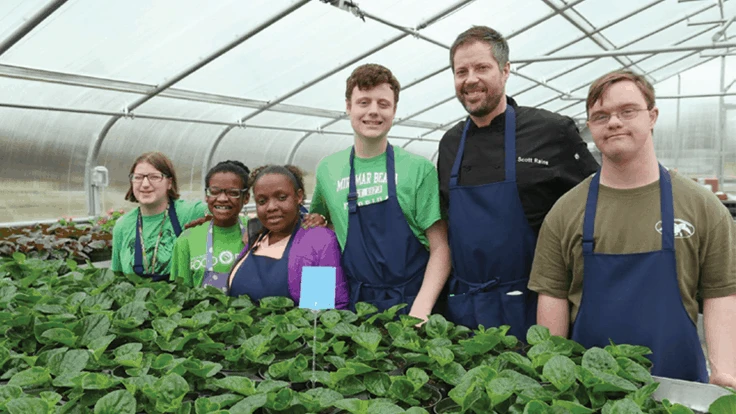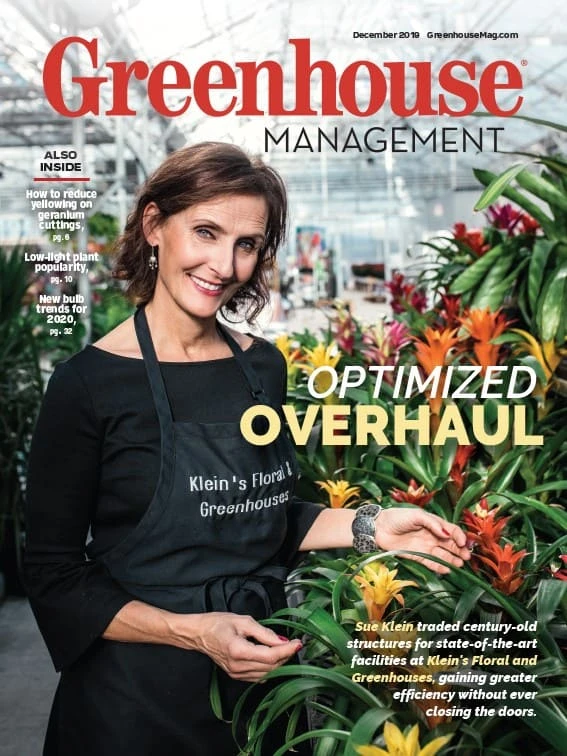
With historically low unemployment rates and the difficulty of navigating the H-2A process, labor-pinched employers throughout the green industry are looking outside of the usual talent pools to meet job demands. But many of them are overlooking a boon of potential workers with disabilities and special needs.
Despite the strong labor market, people with disabilities still face significant barriers to employment. In 2018, only 19% of people with a disability were employed, compared to nearly 66% of those without a disability. This population’s 8% unemployment rate is more than twice the unemployment rate of those with no disability (3.7%), according to the U.S. Bureau of Labor Statistics.
“It’s not because they don’t want to be employed. It’s because they’ve simply not been given the opportunity,” says Krysten Levin, marketing and special events manager at ACCESS, a nonprofit in Little Rock, Arkansas, that offers education, therapy and training for children and adults with learning disabilities. “Individuals with disabilities are just as capable as any other labor pool, and in most cases, more eager and more willing to work.”
Tapping into this often overlooked talent source could be the perfect solution — not just to fill greenhouse jobs, but to also boost productivity, morale and profitability.




Greenhouse skills
Siblings Scott and Tammy Simmons grew up around their family greenhouse outside of Little Rock. Tammy later earned a degree in speech-language pathology and founded ACCESS in 1994 to provide therapy for children with developmental and learning disabilities. As the organization grew, she incorporated horticulture into the curriculum.
Not only did gardening provide therapeutic benefits in the classroom by helping students with fine motor skills, language and sensory processing — it also opened a field of job opportunities for individuals with disabilities as they aged. When Scott came on board as the horticulture program director, with help from their green-thumbed mother, Norma, ACCESS added a vocational horticulture training program to teach job skills to young adults through the greenhouse business. It was a perfect match.
“A lot of times, individuals with disabilities love doing repetitive tasks because they know what to expect,” Levin says. “A lot of the tasks within a greenhouse lend themselves really well to people who thrive with a lot of repetition.”
Starting as young as kindergarten age, ACCESS students attend weekly gardening classes where they learn how to grow plants from cuttings, rootings and plugs. Twice a year, the older students hold community plant sales, gaining exposure to customer service, inventory management and financial transactions. Through another program called the HOPE Project (Herbs Offering Personal Enrichment), young adults receive hands-on training while growing hydroponic herbs to supply several local restaurants.
“They’re learning transferable job skills that can be applied to any industry,” Levin says. “It gives them purpose, and that motivates them to not just work, but do a good job. It’s been great to watch their successes, personally and professionally.”


Job perks
Countless other organizations have recognized horticulture as a vocational gateway for people with disabilities. In New York, SUNY Schenectady County Community College, offers a horticulture certificate program designed for students with disabilities. The 12-week course is taught in tandem by a master gardener from the Cornell Cooperative Extension of Schenectady County and the horticulture coordinator at Schenectady ARC, the local chapter of the national not-for-profit organization dedicated to supporting individuals with disabilities.
“Employers have started to recognize that just because somebody has a developmental or intellectual disability, [that] doesn’t mean they’re not an effective employee,” says Sean Maguire, vice president for workforce development and community education at SUNY Schenectady. “Their personal challenges are not a barrier to employment; it’s just on us to match them up with the right opportunity.”
Graduates from both ARC and ACCESS have gone to work in greenhouses, nurseries, garden centers and other retail businesses, or even the non-profits that trained them.
“Individuals with disabilities are just as capable as any other labor pool, and in most cases, more eager and more willing to work.” — KRYSTEN LEVIN, MARKETING AND SPECIAL EVENTS MANAGER AT ACCESS
“They’ve made some of the best employees that we’ve ever had,” Levin says. “We don’t lose productivity by hiring these individuals because they are so dedicated to their tasks. Productivity in the offices [that employ individuals with disabilities] can go up because they are very good motivators and they boost morale.”
Research backs these benefits — and not just at nonprofits. Studies of Walgreens distribution centers have shown that workers with disabilities have 48% lower turnover, 67% lower medical costs and 73% less time off than employees without disabilities. In multiple surveys, employers agree that the performance of employees with disabilities is equal to, and sometimes better than, their coworkers — especially when it comes to punctuality, attendance and consistency.
As a result, companies that champion inclusive employment practices achieve better results overall. On average, according to a 2018 report sponsored in part by the American Association of People with Disabilities, these companies saw 28% higher revenue, double the net income and 30% higher profit margins than the competition.
Hiring adviceMany of the vocational agencies that serve this population, including ARC and ACCESS, offer employment support and job coaching to help individuals with disabilities transition into the workforce. So, if you’re open to hiring an individual with disabilities, the first step is to: “Find an organization near you and see if they have supported employment or horticulture training programs,” says Donna Vincent, horticulture coordinator at Schenectady ARC.
Even with the support of a job coach, greenhouses that hire individuals with disabilities should be committed to helping these employees succeed.
“Hiring isn’t the end of the transaction,” Maguire says. “You have to accommodate for some support so they’re successful at their job and recognize that a little time and patience does pay dividends in the long run.”
Extra support for employees with disabilities could include:
- Different types of communication “Communication is almost always the No. 1 obstacle,” Levin says. “Oftentimes individuals with disabilities communicate differently, so you have to be patient to discover which means is most effective for them. Auditory processing may be tricky, and they may deal better with visual instructions and hands-on learning.”In the ACCESS greenhouse, Scott Simmons “has a list on a whiteboard that clearly states the tasks for the day, the order they go in and who’s in charge of each one,” Levin says. “When those expectations are clearly laid out, these employees do really well.”
- Support staff Make sure other employees know how to communicate, too, Levin says, by “teaching them how to interact with an individual appropriately, explaining the need for patience, and [encouraging them] to offer help i someone needs it. People can be hesitant to step in and offer help to people with disabilities because they feel like they’re going to offend them, instead of just asking, ‘Do you need help with that?’ The answer might be no, but that opens up the communication lines for the individuals with disabilities to know that they have support.”
- Physical accommodations The accommodations a company might make for employees with physical disabilities are simpler — and less expensive — than you’d think. According to a recent survey by the Job Accommodation Network, a service from the U.S. Department of Labor’s Office of Disability Employment Policy, the majority (59%) of accommodations cost absolutely nothing, and the rest only cost about $500 per employee with a disability. Besides ensuring that the aisles in your greenhouse are the appropriate width and material for wheelchair access, “the accommodations could be as simple as a step [stool] to make it easier to reach something, or understanding that they get tired after long periods of time, and need a break,” Levin says.
- Reiterate the big picture Just like anyone else, “Individuals with disabilities want a purpose,” Levin says. “So, if you want to make them feel welcomed, make sure you explain that their job is just as important to the finished product as the person who plants the seed or sweeps the floor. When you put the emphasis on the importance of each job, they can find purpose and create ownership, and it sets a greenhouse owner up for a successful employee.”

Explore the December 2019 Issue
Check out more from this issue and find your next story to read.
Latest from Greenhouse Management
- Anthura acquires Bromelia assets from Corn. Bak in Netherlands
- Top 10 stories for National Poinsettia Day
- Langendoen Mechanical hosts open house to showcase new greenhouse build
- Conor Foy joins EHR's national sales team
- Pantone announces its 2026 Color of the Year
- Syngenta granted federal registration for Trefinti nematicide/fungicide in ornamental market
- A legacy of influence
- HILA 2025 video highlights: John Gaydos of Proven Winners





